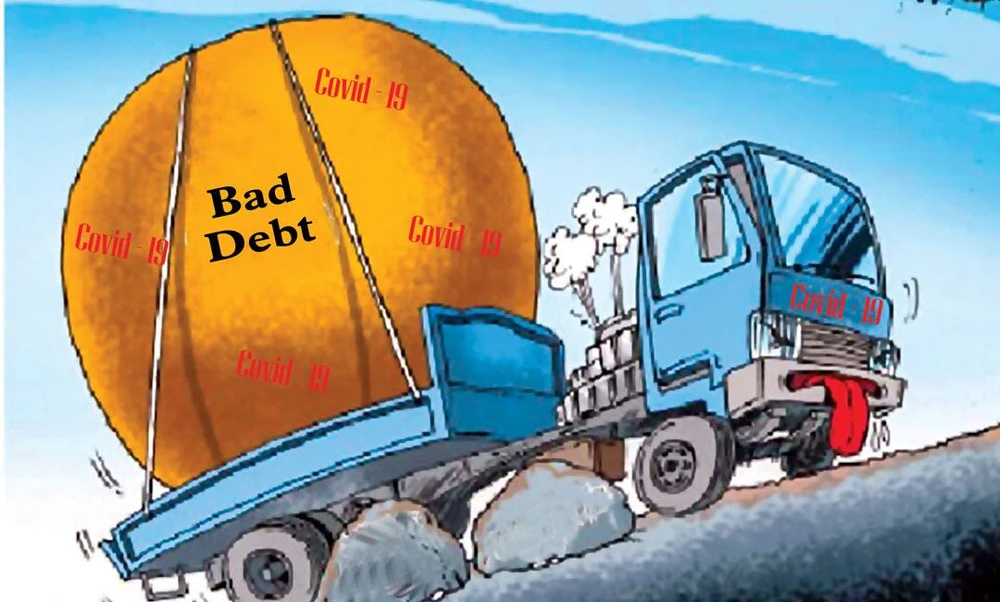
Considering the scenario of Bad Debts set by the State Bank of Vietnam (SBV), this goal can face significant challenges, particularly in view of the unpredictability caused by the outbreak of the Covid-19 pandemic. In a talk with Saigon Investment, Dr. Tran Du Lich, former Deputy Head of the Ho Chi Minh City National Assembly, expressed his views on the serious issue of bad debts.
JOURNALIST: - Sir, before the outbreak of the Covid-19 pandemic, the State Bank of Vietnam had estimated that two million outstanding loans would be affected, accounting for 23% of the total credit in the entire system. The SBV also forecast serious bad debt scenarios in the banking sector in the four quarters of the year as well as the whole of 2020. Recently, the first quarter financial report from many banks showed that the Non-Performing Loan (NPL) ratio has dramatically increased. What do you think about this situation?
Dr. TRAN DU LICH: - In Resolution 11 of the Government dated 14 February 2020, the SBV was assigned to instruct credit institutions to restructure loan repayment, exempt and reduce interest rates, maintain debt groups, lend more to stabilize production and businesses, and also support businesses and customers to overcome difficulties. At the end of February, the State Bank also forecast increasing pressure under two bad debt scenarios.
In one scenario, if the Covid-19 pandemic is brought under control in the first quarter, the bad debt ratio, on balance sheets, sold to Vietnam Asset Management Company (VAMC), and debts that have implemented debt classification measures, will be at 2.9% to 3.2% at the end of the second quarter and from 2.6% to 3% by the end of 2020. In the second scenario, if the pandemic becomes more complicated and prolongs into the second quarter, the bad debt ratio is estimated to increase to nearly 4% at the end of the second and third quarters, and by 7% at the end of 2020.
Due to the implementation of Resolution 11 and after the Covid-19 pandemic started around 23 January, the principal debt and interest arising may last until 30 June or until 30 September. Accordingly, debts will be restructured for repayment and interest rate exempted and reduced, while maintaining the same debt groups.
This is an advantage, because it can help businesses in debt, that are affected by the Covid-19 pandemic, to borrow more to restore production and business activity. At the same time, these policies will also reduce the bad debt ratio. However, in reality, despite technical measures, bad debts have increased and until now, I think it is difficult to fully assess the exact scenario because the situation is still quite complicated.
- The pandemic may affect the progress of implementing the restructuring plan of credit institutions associated with dealing with bad debts and the recovery ability of weak credit institutions, and hence the banking industry will be forced to extend the time for restructuring. Would you agree?
- In the spirit of Decision 1058 / QD-TTg, approving the project "Restructuring Credit Institutions (CIs) to deal with Bad Debts in the period 2016-2020", issued by the Prime Minister on 19 July 2017, the banking system must complete a lot of content in 2020.
Currently, however, a bad case scenario has been predicted by the SBV since the end of February when implementing Resolution 11. In the current situation, the banking industry will probably be unable to complete the task of restructuring the banking system in 2020. The SBV also forecasts that it will be very challenging to complete this task. Efforts for reducing NPLs in the system, improving capacity and quality of some commercial banks, building some banks with strong scale and quality of operations are also some challenges that need to be tackled.
I also think that fulfilling the goals set for each content from now to the end of the year will not be easy, but even if the goals are not achieved, I still believe that the overall situation of the banking system will remain stable. Although the current economy is facing difficulties like it did in the period 2009-2011, the commercial banking system is much better and much more stable than in the previous period, and so is the credit quality. That is a key point. In such a situation, the restructuring goal associated with dealing with bad debts in 2020 may take longer but there will be no need for any more restructuring.
- Pressure from increasing bad debts in the banking industry is very huge, while SMEs say they cannot access capital, and more and more businesses have withdrawn from the market. While recovering from the Covid-19 pandemic, should there be any solution to save groups of businesses without creating a bad debt burden for banks? What is your opinion on this matter?
- In my opinion, it is necessary to have separate solutions for different groups, which are specific in nature and can support the individual SME sector affected by disruption in production and a broken supply chain. Currently, the Government is developing a post-pandemic economic recovery program. I believe that in this program, the Government will focus more on supporting SMEs affected in this period of unpredictability and economic slowdown.
I think the State will build some strong support measures to ease part of the burden for businesses, as we cannot enforce commercial banks to take care of all the remedies. Besides, commercial banks will certainly secure their position first before lending to businesses, even those badly affected by the disruption caused by the Covid-19 pandemic.
Banks have the right to give unsecured loans, but do not like to take huge risks in lending. If businesses need to borrow, they must offer a collateral. The Government will certainly offer a support role to SMEs but will also look at sources of guarantee and debt repayment capabilities before SMEs have access to capital funds.
- Thank you very much.




















